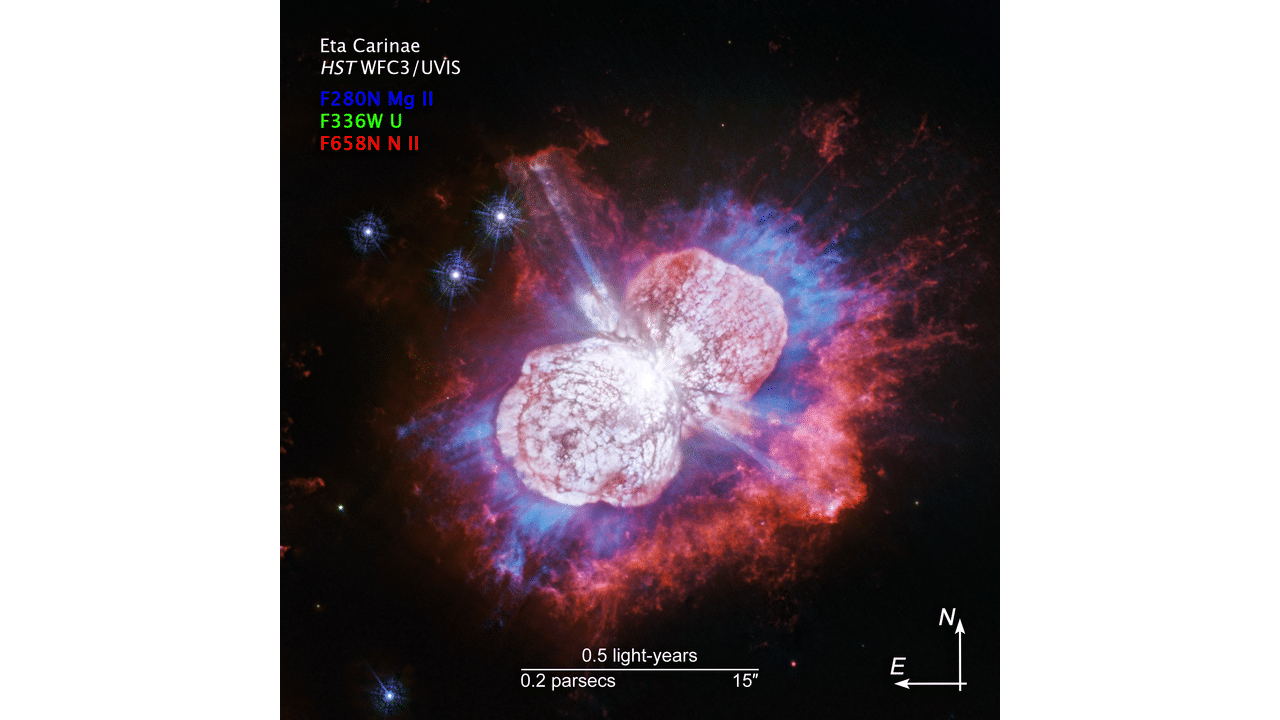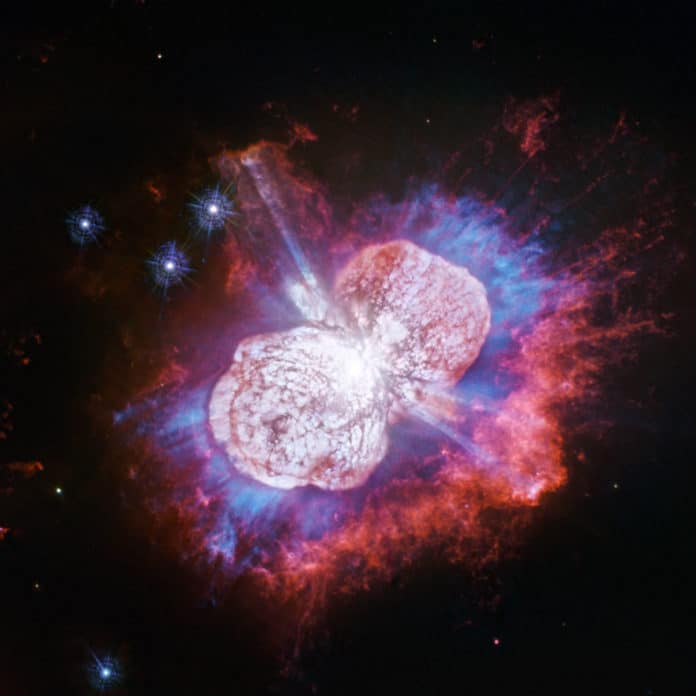The Hubble Space Telescope recently captured a spectacular image of the galaxy’s largest ongoing stellar “fireworks” which reveals new details of a cosmic explosion. The Telescope’s cool view shows Eta Carinae, a doomed super-massive star located 7,500 light-years away, which is nothing but the largest member of a double-star system.
A new view from NASA’s Hubble Space Telescope, which includes ultraviolet light, shows the star’s hot, expanding gases glowing in red, white, and blue.
As per NASA, it takes the shape of a pair of ballooning lobes of dust, gas, and other filaments spewed by the boisterous star, which might have weighed more than 150 suns at one time. The fireworks started in the 1840s when Eta Carinae went through a titanic outburst, called the Great Eruption, making it the second-brightest star visible in the sky for over a decade. Since the eruption, the star has faded a bit and isn’t very visible to the unaided eye, however, the fireworks aren’t over yet.

Astronomers have studied the star for over the past 25 years with the help of almost every instrument on Hubble. Using Hubble’s Wide Field Camera 3, the team map the ultraviolet-light glow of magnesium present in warm gas – shown in blue. Surprisingly, astronomers discovered the gas in places they had not seen it before.
In the new images, the team had expected to discover light from magnesium coming from the same complicated array of filaments present in the glowing nitrogen (shown in red). However, the team observed a completely new luminous magnesium structure in the space between dusty bipolar bubbles and the outer shock-heated nitrogen-rich filaments.
“We’ve discovered a large amount of warm gas that was ejected in the Great Eruption but hasn’t yet collided with the other material surrounding Eta Carinae,” explained Nathan Smith of Steward Observatory at the University of Arizona in Tucson, Arizona, lead investigator of the Hubble program. “Most of the emission is located where we expected to find an empty cavity. This extra material is fast, and it ‘ups the ante’ in terms of the total energy for an already powerful stellar blast.”
According to researchers, this newly discovered gas is important to understand how the explosion has started because it represents the fast and energetic ejection of material that may have been expelled by the star shortly before the expulsion of the bipolar lobes.
The streaks visible in the blue region outside the lower-left lobe are a striking feature in the image. These are created when Eta Carinae’s light rays beam through dust clumps dispersed along the bubble’s surface. Wherever the ultraviolet light strikes the dense dust, it leaves a long, thin shadow that extends beyond the lobe into the surrounding gas.
The researchers say this technique of searching in ultraviolet light for warm gas could be used to study other stars and gaseous nebulas.
“We had used Hubble for decades to study Eta Carinae in visible and infrared light, and we thought we had a pretty full accounting of its ejected debris. But this new ultraviolet-light image looks astonishingly different, revealing gas we did not see in other visible-light or infrared images,” Smith said.
“We’re excited by the prospect that this type of ultraviolet magnesium emission may also expose previously hidden gas in other types of objects that eject material, such as protostars or other dying stars. Only Hubble can take these kinds of pictures.“
